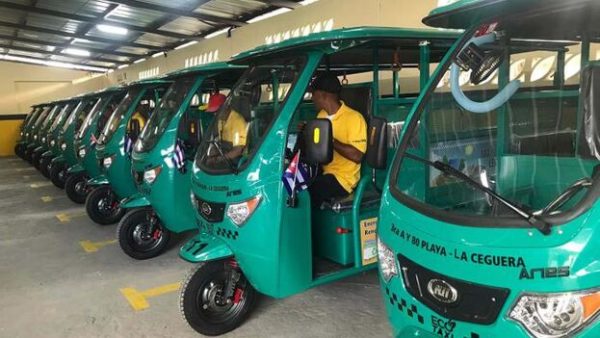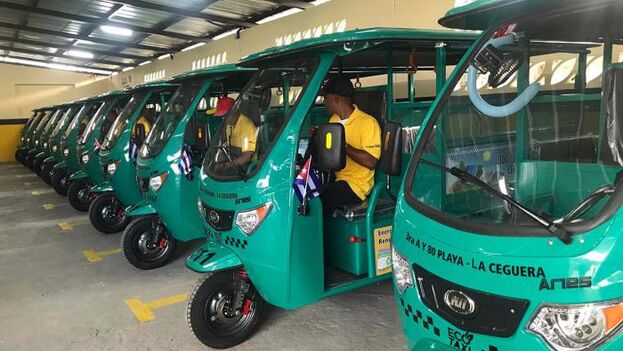New Electric Tricycles in Havana are (Practically) Phantoms

 Electric tricycles, presented by the Havana authorities, for operating on the new routes in the Playa (Beach) district. (Tribuna de La Habana)
Electric tricycles, presented by the Havana authorities, for operating on the new routes in the Playa (Beach) district. (Tribuna de La Habana)Three new routes begin to operate in the municipality of Playa, but you can hardly see the vehicles
By Juan Diego Rodríguez (14ymedio)
HAVANA TIMES – The authorities in Havana have twice announced, in their customary pomp, the arrival of electric vehicles onto new transport routes in the Playa district. The first time, two weeks ago, the official press assured us that a tricycle service would commence on 15 November, but this didn’t materialize.
Days later, and without any explanation, Tribuna de La Habana changed the start date: it would be the following Monday, 21 November, when a total of 20 electric tricycles would begin to operate, increasing later to 25, They would be organised on three routes: from 3rd and 80 to La Ceguera hospital; from avenue 120 to the hospital; and from 120 to La Puntilla, on a timetable running from 7am to 7pm.
“People will be able to access an affordable, quick and efficient alternative to, and complement to, the public bus service, which will generate local employment”, boasted the provincial newspaper.
However, the vehicles didn’t appear anywhere. At La Puntilla, for example, the supposed final stop on one of the routes, none of the local residents said they’d seen the new means of transport, which was meant to help alleviate the ever pressing crisis of mobility in the capital, owing chiefly to the shortage of fuel.
Neither could any signage be seen at the supposed stops along the routes, such as on Calle 0 and 1.
Julio, who works near to the Sierra Maestra building — headquarters of the Cimex Corporation — was already thinking they must be nothing more than “phantom tricycles” when, on Friday, he finally got onto one. “It was quite by chance. I found it when I was walking down Third street, but hardly anyone knows about them, so much so, that where I boarded there were no other passengers waiting, and just one woman got on board during the whole journey”.
The vehicle, which has a capacity of 6 passengers and a range of 120 km, was driven by a woman, like other electric tricycles operating in Havana, but on these new routes, according to the driver, they have hired men too.
At a price of 4 pesos people usually pay 5 and don’t expect any change. “I’m not going to ask for one peso back”, Julio explained. “No, and I’m not going to give it to you!”, replied the driver, laughing — in a country where the decreasing value of small denomination notes and coins makes them more and more useless for making everyday payments.
Regarding energy sources, there’s still no news about those solar powered hubs that were promised for the Ecotaxis in Central Havana. “This thing is charged up on the normal mains power supply, no solar panels or anything like that”, explained the vehicle’s driver. “Those kinds of things only work on television. Beyond that, no, nothing”, her passenger replied, cynically.
It goes without saying that the arrival of the new tricycles is designed to force a lowering of prices by the taxi drivers operating the beach zone. One journey in a big almendrón* taxi costs at least 50 pesos, but the likelihood of a price drop remains far off. While the old Chevrolets or Fords circulate constantly around the city, the new initiative by the authorities can hardly be seen. They might have three wheels, but the others have many years of struggling with inflation and with state experiments.
Translated by Ricardo Recluso for Translating Cuiba
*Translator’s note: Almendrón — from the Spanish word for ‘almond’, because of the shape — is the name given to the large classic US cars operated as private taxis in Cuba.
—–





